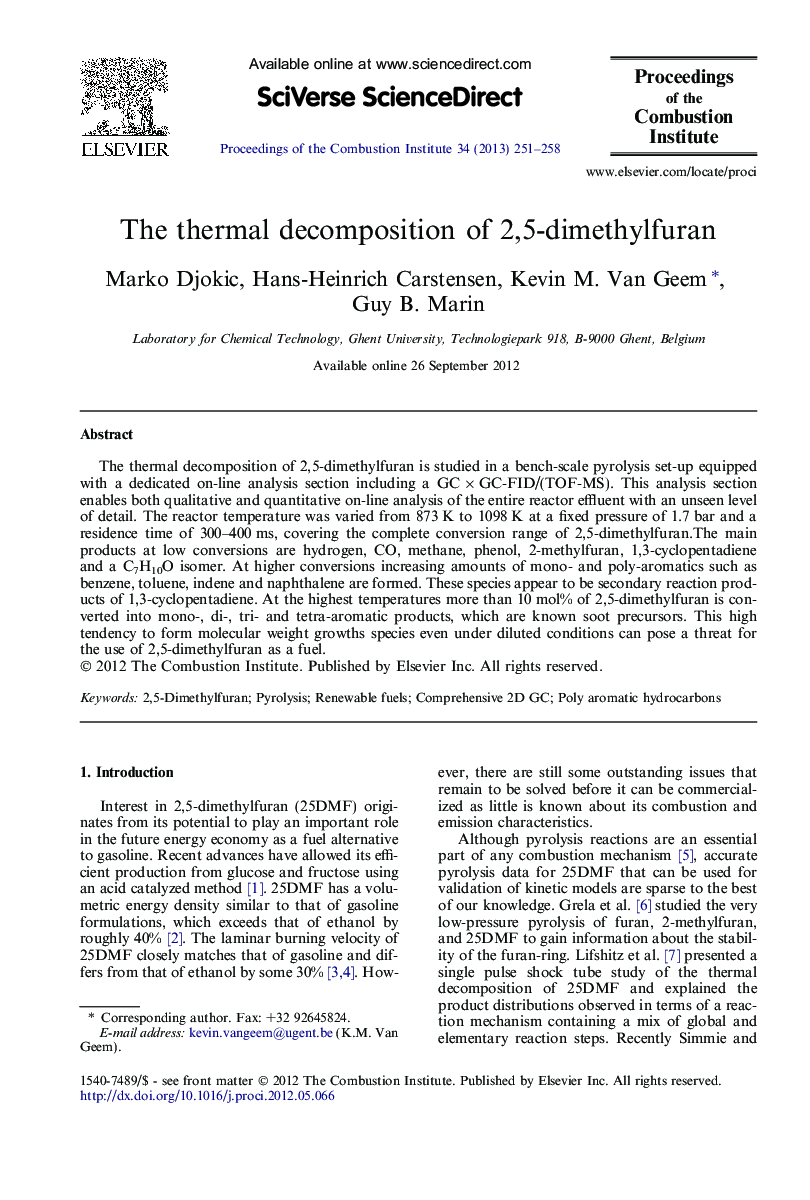| Article ID | Journal | Published Year | Pages | File Type |
|---|---|---|---|---|
| 241123 | Proceedings of the Combustion Institute | 2013 | 8 Pages |
The thermal decomposition of 2,5-dimethylfuran is studied in a bench-scale pyrolysis set-up equipped with a dedicated on-line analysis section including a GC × GC-FID/(TOF-MS). This analysis section enables both qualitative and quantitative on-line analysis of the entire reactor effluent with an unseen level of detail. The reactor temperature was varied from 873 K to 1098 K at a fixed pressure of 1.7 bar and a residence time of 300–400 ms, covering the complete conversion range of 2,5-dimethylfuran.The main products at low conversions are hydrogen, CO, methane, phenol, 2-methylfuran, 1,3-cyclopentadiene and a C7H10O isomer. At higher conversions increasing amounts of mono- and poly-aromatics such as benzene, toluene, indene and naphthalene are formed. These species appear to be secondary reaction products of 1,3-cyclopentadiene. At the highest temperatures more than 10 mol% of 2,5-dimethylfuran is converted into mono-, di-, tri- and tetra-aromatic products, which are known soot precursors. This high tendency to form molecular weight growths species even under diluted conditions can pose a threat for the use of 2,5-dimethylfuran as a fuel.
